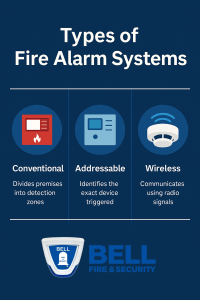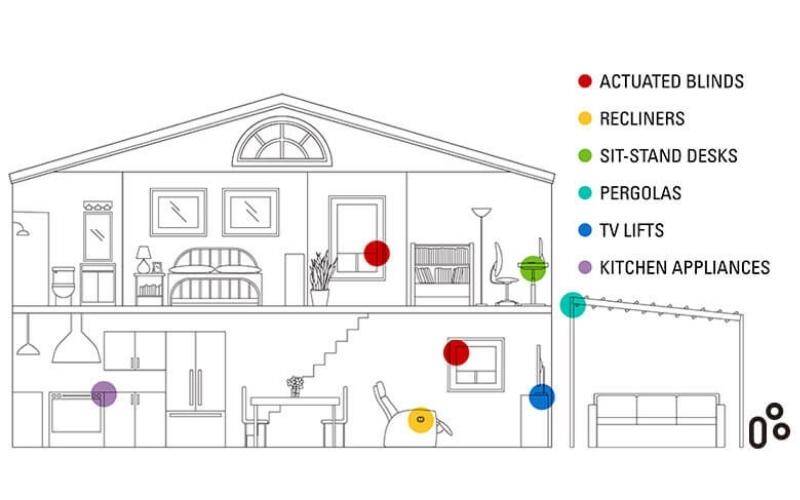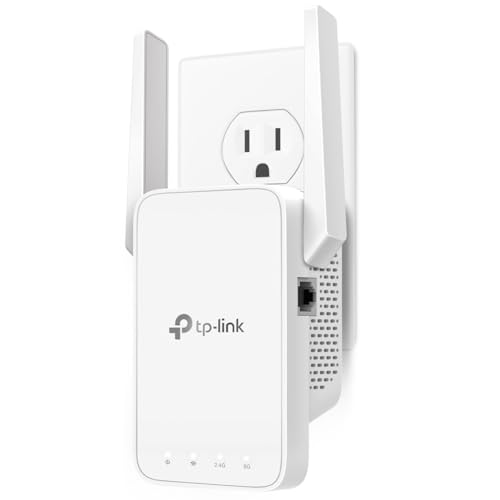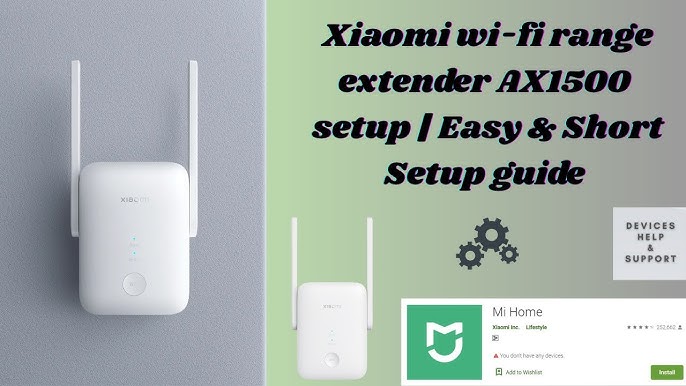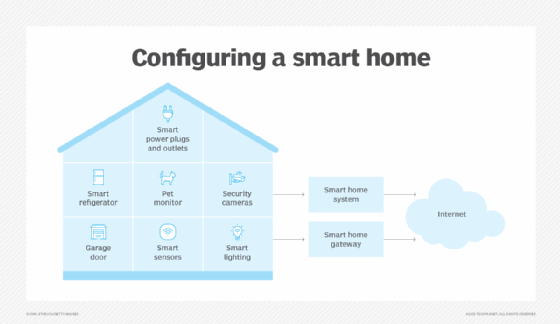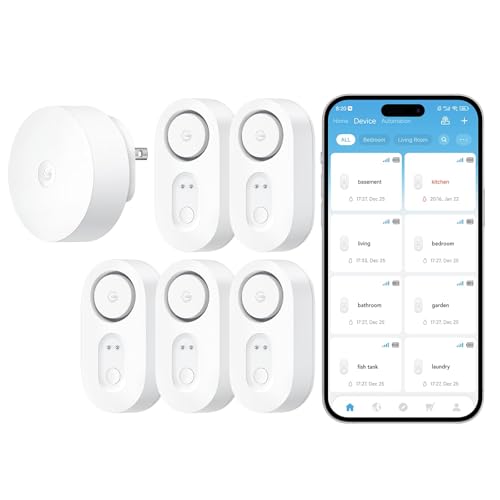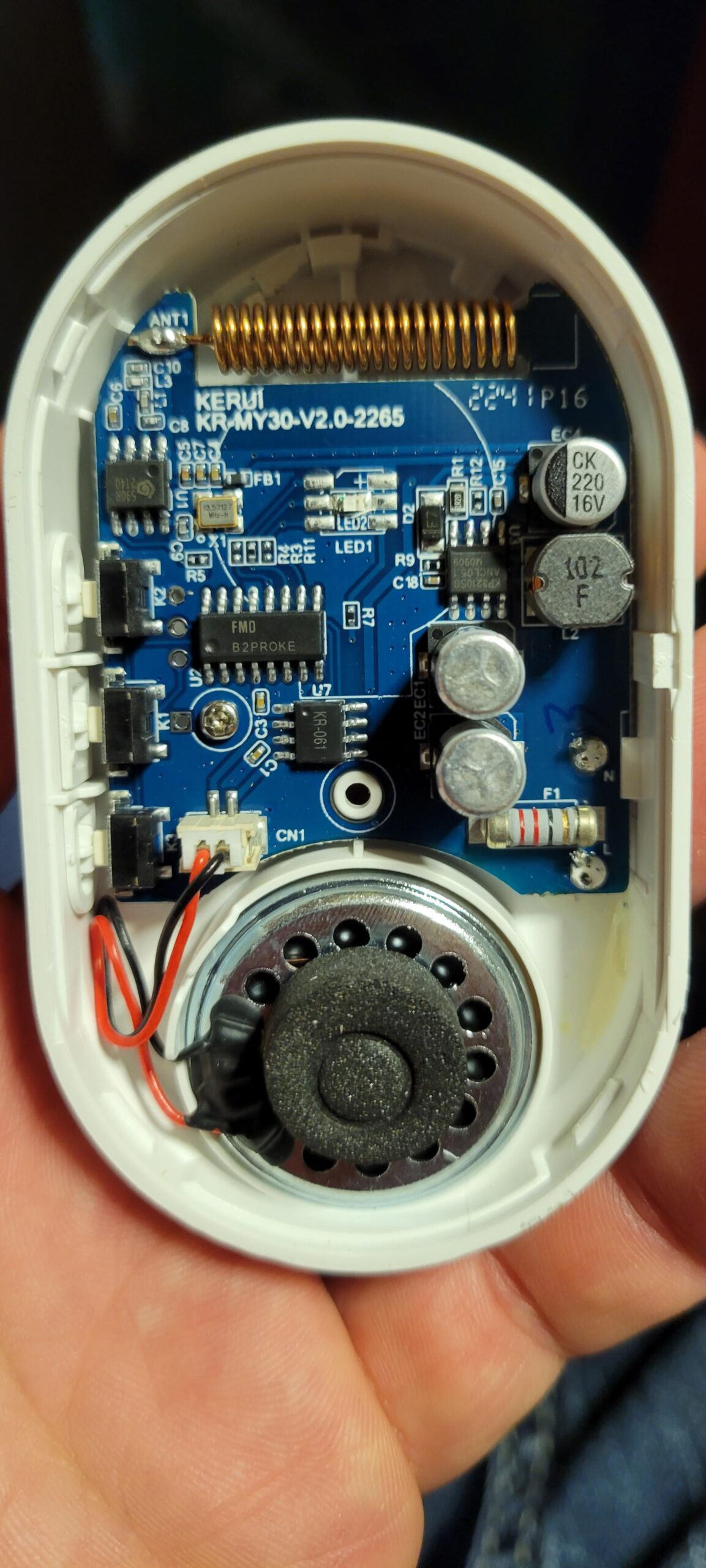Are you worried about the safety of your home or business? Choosing the right alarm system can make all the difference in protecting what matters most to you.
But with so many types available, how do you know which one fits your needs? This guide will help you understand the different alarm system types, so you can make a smart choice that keeps you safe and gives you peace of mind.
Keep reading to discover which alarm system is the perfect match for your security needs.
Wired Alarm Systems
Wired alarm systems use cables to connect sensors and control panels. They have been a popular choice for many years.
These systems provide reliable security by sending signals through physical wires. They need careful planning before installation.
Key Features
Wired alarm systems use physical cables to link all parts. This creates a strong and steady connection for security signals.
They often include sensors for doors, windows, and motion detectors. The control panel manages all alerts and system settings.
- Hardwired connections between sensors and control panel
- Power supply through electrical wiring
- Works well in buildings with existing wiring
- Usually connected to a central monitoring service
- Less prone to interference compared to wireless systems
Installation Process
Installing a wired alarm system requires running cables inside walls or ceilings. This needs careful planning to hide wires.
Professionals often do the installation. They connect all sensors to the control panel and test the system for proper operation.
- Plan cable routes before starting installation
- Run wires through walls, ceilings, or floors
- Mount sensors and connect to control panel
- Connect system to power source
- Test all parts to ensure the system works
Pros And Cons
Wired alarm systems have strong, stable connections. They do not rely on batteries for communication.
They can be harder to install and less flexible than wireless systems. Moving or changing parts may need rewiring.
| Pros | Cons |
|---|---|
| Reliable and stable signal connection | Installation can be complex and time-consuming |
| Not affected by wireless interference | Less flexible for changes or additions |
| Usually less expensive in long term | Wires may be visible if not properly hidden |
| Works without batteries for communication | Repairs may require professional help |
Wireless Alarm Systems
Wireless alarm systems use radio signals instead of wires. They help protect homes and businesses from break-ins and emergencies.
These systems are easy to install and can work with many types of sensors and devices.
How They Work
Wireless alarm systems connect sensors to a central control panel using radio waves. Sensors detect motion, opening doors, or glass breaking.
The control panel receives signals and triggers alarms or sends alerts to the owner or security company.
- Sensors send wireless signals to the control panel
- Control panel processes signals and activates alarms
- Alerts can be sent via phone or internet
Advantages
Wireless systems do not need wires, so they are simple to install. They can be placed anywhere without drilling holes.
These systems are flexible and easy to expand with new sensors or devices as needed.
- Easy and fast installation
- Flexible placement of sensors
- Simple to add or remove devices
- Less damage to walls and ceilings
- Portable and suitable for renters
Common Challenges
Wireless alarm systems can face interference from other wireless devices. This can cause delays or missed signals.
The batteries in wireless sensors need regular checking and replacement to keep the system working well.
- Signal interference from other electronics
- Batteries need frequent replacement
- Range limits between sensors and control panel
- Some systems can be vulnerable to hacking
Monitored Alarm Systems
Monitored alarm systems connect your home or business to a security center. They watch for alarms and send help if needed. These systems offer extra safety beyond just sounding an alarm.
They use technology to alert a professional team about emergencies. This team can then contact you or emergency services quickly.
Professional Monitoring Services
Professional monitoring services work 24/7 to watch your alarm system. They get alerts instantly when something is wrong. This helps keep your property safe all the time.
The service team can check if an alarm is real or a false alert. They stay ready to act fast and keep you informed.
Response Protocols
When an alarm triggers, the monitoring center follows set steps. They try to contact you first to verify the situation. If no answer, they call emergency services.
This protocol helps avoid false alarms and ensures help comes quickly during real emergencies.
- Alert received by monitoring center
- Contact homeowner or key holder
- If no response, notify police or fire department
- Follow up with customer after response
Subscription Costs
Monitored alarm systems need a monthly or yearly fee. This fee covers the monitoring service and system maintenance. Costs vary based on service level and features.
Choosing the right plan depends on your budget and security needs. Some plans include extra services like video monitoring or smart home control.
- Basic monitoring: lower cost, standard alerts
- Enhanced monitoring: includes video and mobile alerts
- Premium plans: add home automation and faster response
Unmonitored Alarm Systems
Unmonitored alarm systems alert you directly when there is a problem. They do not connect to a monitoring center.
These systems are simple and let you decide how to respond to alarms.
Self-monitoring Options
You watch and respond to your alarm alerts yourself. You get notifications on your phone or other devices.
Some systems have apps that show alarm status and history. You can check your property anytime.
- Mobile phone notifications
- App alerts with status updates
- Sound alarms on site
- Visual indicators like lights
Alert Methods
Alarms use sounds and signals to tell you about trouble. Sirens and flashing lights warn people nearby.
You can get alerts by text, call, or app push notifications. These help you act quickly.
- Local sirens and bells
- Text message alerts
- Phone call notifications
- App push notifications
Cost Benefits
Unmonitored systems cost less than monitored ones. You save on monthly fees for monitoring services.
Installation is often simpler and cheaper. You control your system without extra costs.
- No monthly monitoring fees
- Lower installation costs
- Easy to maintain yourself
- Good for budget-conscious users
Smart Alarm Systems
Smart alarm systems use internet and technology to protect homes. They connect to devices and allow easy control.
These systems help keep your home safe with modern features. They are different from traditional alarms.
Integration With Smart Home Devices
Smart alarms link with other smart home devices. This helps create a connected safety network in your home.
They work with lights, cameras, and sensors. This makes your home respond automatically to alarms.
- Turn on lights when alarm sounds
- Send video from cameras to your phone
- Connect with smart locks for added security
Remote Access Features
Smart alarm systems let you control your alarm from anywhere. Use your phone or tablet to check your home.
You can arm or disarm the system remotely. Receive alerts instantly if the alarm goes off.
- View live security camera footage
- Get notifications of any activity
- Control alarm settings through an app
Security Benefits
Smart alarm systems improve home security with quick alerts and smart responses. They help stop theft and damage.
The systems can alert police or security services automatically. They also help you check your home anytime.
- Fast notification to emergency contacts
- Integration with cameras for evidence
- Automatic alarms reduce response time

Credit: completepumpsandfire.com.au
Motion Sensor Alarms
Motion sensor alarms detect movement in a protected area. They alert you if someone enters without permission.
These alarms are common in homes and businesses to improve security. They help catch intruders quickly.
Types Of Sensors
Motion sensors use different technologies to detect movement. Each type works best in certain conditions.
- Passive Infrared (PIR):Detects heat from bodies. Works well indoors.
- Ultrasonic:Sends sound waves and measures reflection. Good for large areas.
- Microwave:Emits microwave signals to sense motion. Covers wide spaces.
- Dual-Technology:Combines two types to reduce false alarms.
Placement Tips
Proper placement helps motion sensors work well. Place them where intruders might pass.
Avoid pointing sensors at pets or heating vents. This reduces wrong alarms and improves detection.
- Install sensors 6 to 8 feet above the floor
- Cover main entry points and hallways
- Keep sensors away from windows and direct sunlight
- Test sensor range after installation
False Alarm Prevention
False alarms cause stress and waste time. Avoid them by adjusting sensor settings carefully.
Use sensors with pet immunity or dual-technology to lower false triggers. Regular maintenance also helps.
- Keep sensors clean and dust-free
- Adjust sensitivity to match the environment
- Avoid placing sensors near heating or cooling vents
- Test sensors regularly to ensure proper function
Glass Break Detectors
Glass break detectors are security devices that sense the sound of breaking glass. They help protect homes and businesses from intruders.
These detectors add an extra layer of security by alerting you when a window or glass door breaks.
Detection Technology
Glass break detectors use special microphones to listen for glass breaking sounds. They recognize the unique noise pattern made by shattered glass.
Some detectors use acoustic sensors, while others combine acoustic and shock sensors to reduce false alarms.
- Acoustic sensors detect sound waves from breaking glass
- Shock sensors detect vibrations on the glass surface
- Dual technology combines both for better accuracy
Ideal Locations
Place glass break detectors near windows and glass doors. These points are common entry spots for burglars.
They work best in rooms with clear lines of sight and minimal noise interference.
- Living room windows
- Sliding glass doors
- Office or storefront windows
- Glass walls or partitions
Maintenance Tips
Test your glass break detectors monthly to ensure they work. Replace batteries as needed to keep them active.
Keep the sensors clean and free from dust or dirt. Avoid placing objects near the detector that could block sound.
- Perform regular sound tests
- Change batteries every 6 to 12 months
- Clean sensors gently with a soft cloth
- Check for obstructions near the detector

Credit: asmintegrators.com
Choosing The Right System
Choosing the right alarm system helps protect your home and family. Different types of systems fit different needs.
Understanding your options makes it easier to pick the best system for your situation.
Assessing Home Needs
Look at your home’s size, layout, and entry points. These affect the kind of system you need.
Think about who lives in the house and their routines. This helps decide system features.
- Number of doors and windows
- Presence of pets
- Family members’ schedules
- Areas that need extra protection
Budget Considerations
Alarm systems come in many price ranges. Set a budget before shopping to avoid overspending.
Consider installation and monthly fees if you want monitoring services. These add to the total cost.
- Cost of equipment and installation
- Monthly monitoring fees
- Maintenance and repair costs
- Optional features like cameras or smart home integration
Future Scalability
Choose a system that can grow with your needs. This saves money and effort later.
Look for systems that allow adding sensors or features easily. Wireless systems often offer this flexibility.
- Expandable sensor options
- Integration with smart home devices
- Ability to upgrade software or hardware
- Support for mobile alerts and remote control
Installation And Maintenance
Alarm systems help protect homes and businesses from theft and danger. Proper installation and regular maintenance keep these systems working well.
This guide covers key points about installing and caring for alarm systems. It explains the differences between DIY and professional setups, routine checks, and common troubleshooting tips.
Diy Vs Professional Installation
Some people install alarm systems themselves to save money. Others hire experts for a safer and faster setup. Each choice has benefits and risks.
DIY installation is good for small, simple systems. Professional installers handle complex systems and ensure all parts work well together.
- DIY saves cost but needs time and skill
- Professionals provide expert setup and testing
- Professionals often offer warranty and support
- DIY risks missing important wiring or settings
Routine Checks
Checking your alarm system regularly helps find problems early. This keeps your home safe and avoids false alarms.
Routine checks should include testing sensors, batteries, and communication links. Clean devices to prevent dust build-up.
- Test all sensors monthly
- Replace batteries every 6-12 months
- Check control panel for errors
- Clean detectors and cameras gently
- Verify the alarm sounds properly
Troubleshooting Common Issues
Alarm systems may have problems like false alarms or no alerts. Simple fixes can solve many common issues quickly.
Start by checking power sources and sensor connections. Reset the system if it acts strangely. Contact support if problems persist.
- Replace dead or weak batteries
- Clean sensors and cameras carefully
- Check for loose or damaged wires
- Reset the alarm control panel
- Review system settings for errors
Enhancing Home Security
Alarm systems help protect your home and family. They alert you to danger and keep intruders away.
There are many types of alarm systems to choose from. Each type offers different benefits for safety.
Combining Systems
Using more than one alarm system increases home security. You can combine sensors, cameras, and alarms.
This helps cover blind spots and improves detection. Different systems work together for better protection.
- Door and window sensors with motion detectors
- Security cameras linked to alarm alerts
- Fire alarms connected to burglar alarms
Additional Security Measures
Alarm systems are more effective with extra security steps. Lights, locks, and signs add strong defense.
Simple actions make your home less attractive to thieves. Use tools that work well with your alarms.
- Install bright outdoor lights
- Use strong door and window locks
- Place security signs to warn intruders
- Keep bushes trimmed to avoid hiding spots
Emergency Preparedness
Plan for emergencies to stay safe. Know how to react if alarms go off or danger is near.
Practice safety drills with your family. Keep emergency numbers and tools handy at all times.
- Have a clear escape plan
- Teach children how to respond
- Store flashlights and first aid kits
- Save police and fire numbers in your phone

Credit: learn.marineinsight.com
Frequently Asked Questions
What Are The Main Types Of Alarm Systems?
The main types of alarm systems include wired, wireless, and hybrid systems. Wired systems are reliable but need professional installation. Wireless systems are flexible and easier to install. Hybrid systems combine both wired and wireless features, offering a balance of reliability and flexibility for different needs.
How Do Wired Alarm Systems Work?
Wired alarm systems use physical wires to connect sensors to the control panel. They are known for their reliability and stability. Installation involves running cables through walls, which can be complex. Wired systems are less prone to interference, making them ideal for larger properties requiring robust security.
Are Wireless Alarm Systems Reliable?
Yes, wireless alarm systems are reliable and increasingly popular. They use radio frequencies to communicate between devices, eliminating the need for wires. Modern technology ensures minimal interference and secure signals. Wireless systems are easy to install and expand, making them a great choice for homeowners seeking a convenient security solution.
What Is A Hybrid Alarm System?
A hybrid alarm system combines wired and wireless technology for enhanced flexibility. It allows integration of existing wired components with new wireless devices. This system is ideal for upgrading older systems without complete rewiring. It provides the benefits of both technologies, offering robust and adaptable security solutions.
Conclusion
Choosing the right alarm system keeps your home safe and secure. Different types fit different needs and budgets. Wired systems offer reliability, while wireless ones provide easy installation. Some include cameras, motion sensors, or smart features. Think about your space and what matters most.
A good alarm helps you feel calm and protected. Stay informed and pick what works best for you. Safety is always worth the effort.
25 min read

